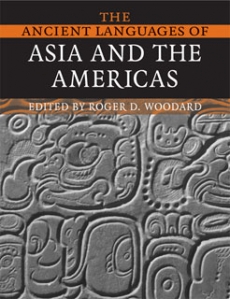The Ancient Languages of Asia and the Americas
In the following pages, the reader will discover what is, in effect, a linguistic description of all known ancient languages. Never before in the history of language study has such a collection appeared within the covers of a single work. This volume brings to student and to scholar convenient, systematic presentations of grammars which, in the best of cases, were heretofore accessible only by consulting multiple sources, and which in all too many instances could only be retrieved from scattered, out-of-the-way, disparate treatments. For some languages, the only existing comprehensive grammatical description is to be found herein.
This work has come to fruition through the efforts and encouragement of many, to all of whom the editor wishes to express his heartfelt gratitude. To attempt to list all – colleagues, students, friends – would, however, certainly result in the unintentional and unhappy neglect of some, and so only a much more modest attempt at acknowledgments will be made. Among those to whom special thanks are due are first and foremost the contributors to this volume, scholars who have devoted their lives to the study of the languages of ancient humanity, without whose expertise and dedication this work would still be only a desideratum. Very special thanks also go to Dr. Kate Brett of Cambridge University Press for her professionalism, her wise and expert guidance, and her unending patience, also to her predecessor, Judith Ayling, for permitting me to persuade her of the project’s importance. I cannot neglect mentioning my former colleague, Professor Bernard Comrie, now of the Max Planck Institute, for his unflagging friendship and support. Kudos to those who masterfully translated the chapters that were written in languages other than English: Karine Megardoomian for Phrygian, Dr. Margaret Whatmough for Etruscan, Professor JohnHuehnergard for Ancient South Arabian. Last of all, but not least of all, I wish to thank Katherine and Paul – my inspiration, my joy.
Roger D. Woodard
Christmas Eve 2002 | 